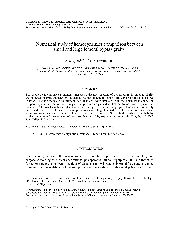摘要
The geometry factors have prominent impacts on the flow patterns of bypass graft. In order to clarify the influence of graft diameter on the hemodynamics of femoral bypass graft, the pulsatile blood flows in three bypassing models with different graft diameters were Simulated with finite-element method. The temporal-spatial distributions of flow patterns, pressure drops, and wall shear stresses were depicted and compared. The results indicated that femoral artery bypassed with a large graft demonstrates relatively better and more profitable hemodynamic phenomena with large longitudinal velocity, uniform wall shear stress, and small wall shear stress gradient. The large model may be effective in decreasing the probability of the initiation and development of postoperative intimal hyperplasia and restenosis.
